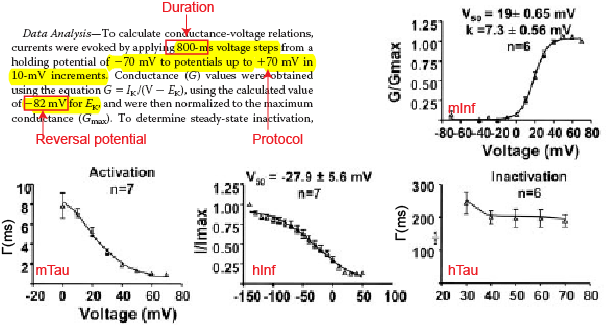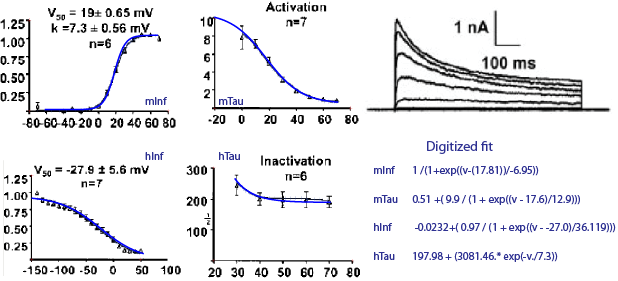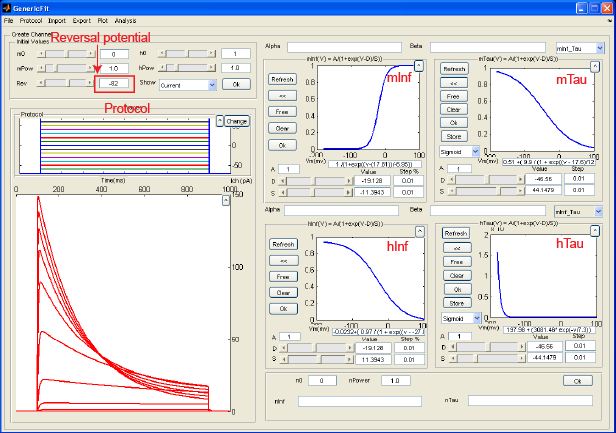Hodgkin Huxley Models
Building models for each ion channel is one of the main goal of Channelpedia.
Constructing a HH model from this experimental data requires: 1) Parameter identification 2) Digitization 3) H-H model fitting and 4) Parameter readjustment. Following example illustrates this process with construction of Kv3.3 ion channel model from literature (Desai et al., 2008)[1].
Parameter identification
Typical parameters required to build a HH model are, applied stimulus protocol, reversal potential of an ion channel along with steady state activation and inactivation kinetics. Following figure lists these parameters for Kv3.3 ion channel from a published article (Desai et al., 2008)[1].

Digitization
Since the equations describing model parameters are often missing from the literature, the curve digitization process is used to recreate and validate those equations. Figure below illustrates digitization and curve fitting process with "Engauge Digitizer" and custom built Matlab routine, respectively.

HH model fitting
After digitization and curve fitting, GenericFit a custom built Matlab routine is used to simulate the ion channel kinetics. GenericFit provides graphical user interface to simulate Hodgkin-Huxley kinetics Figure below illustrates the model generated with direct substitution of fitted parameters (mInf, mTau, hInf, hTau) for Kv3.3 ion channel.

Although parameter values were taken directly from literature, in this case, the model fails to recreate the current traces observed during the experiment. This discrepancy can be attributed to the fact that the experimentally measured values are approximation to the model parameters, they are not the exact values required for the models. Using full trace model fitting is one way to deal with this problem. This example also illustrates a case when digitization of current trace is also not available or possible.

Parameter re-adjustments
The model parameters are readjusted in cases where direct substitution of model parameters fail to recreate the recorded current traces. For example, to fix the activation range problem, mInf curve is shifted towards higher voltage. Similarly activation time constant (mTau) and steady state inactivation (hInf) are corrected to match the experimentally recorded current traces.

Final model
Building HH models in this manner is a small step in bridging the huge gap between ion channel biophysics characterization and neuronal simulation. Although the models are not constrained completely, they provide first approximate model and with Channelpdia.s wiki like functionality, it is now possible for researchers to collectively discuss and improve the models Kv3.3.

References
[1] Protein kinase C modulates inactivation of Kv3.3 channels.
J. Biol. Chem., 2008 Aug 8, 283(22283-94).